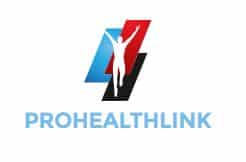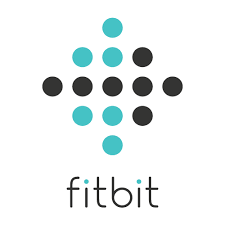Table of Contents
The Comprehensive Guide to Fasting: Types, Benefits, Risks, and Tips
Fasting, the practice of abstaining from food and, in some cases, beverages, has been a part of human history and culture for centuries. In recent years, fasting has gained popularity not only for its potential health benefits but also as a strategy for weight loss and overall well-being. In this comprehensive guide, we will explore the various types of fasting, the potential benefits and risks, and provide tips for safe and effective fasting.
Types of Fasting
1. Intermittent Fasting (IF):
Intermittent fasting is one of the most common fasting methods. It involves cycling between periods of eating and fasting. For example, you might follow a 16/8 schedule, where you fast for 16 hours and eat within an 8-hour window each day. Other popular variations include the 14/10, 18/6, and even 20/4 schedules. IF is flexible and can be adapted to suit individual preferences and lifestyles.
2. Extended Fasting:
Extended fasting involves fasting for more extended periods, typically 24 hours or more. Some people fast for 24, 36, or even 48 hours, occasionally or regularly. Extended fasting can be challenging and is often used for specific health goals, such as autophagy and metabolic health improvement.
3. Alternate-Day Fasting (ADF):
With ADF, you alternate between fasting days and regular eating days. On fasting days, you consume very few calories, if any. ADF can be an effective strategy for weight loss, but it may not be suitable for everyone due to its intensity.
4. 5:2 Diet:
In this approach, you eat normally for five days a week and significantly reduce your calorie intake (usually around 500-600 calories) on the other two non-consecutive days. The 5:2 diet is a more moderate form of fasting and can be a sustainable option for many individuals.
5. Water Fasting:
Water fasting is a more extreme form of fasting where you consume only water for an extended period, ranging from a day to several days. It should be done under medical supervision due to the potential risks associated with extended water fasting.
6. Juice Fasting:
Similar to water fasting, but you consume only freshly made fruit and vegetable juices during the fasting period. Juice fasting provides some essential nutrients but is still a restrictive form of fasting.
7. Time-Restricted Eating (TRE):
Time-restricted eating is a form of intermittent fasting that focuses on when you eat rather than what you eat. It can be as simple as eating all your meals within a specific time frame, such as 12:00 PM to 8:00 PM. TRE is a more sustainable and manageable approach for many people.

Potential Benefits of Fasting
1. Weight Loss:
One of the primary reasons people turn to fasting is for weight loss. Fasting creates a calorie deficit, which may lead to weight loss over time. Additionally, fasting can improve insulin sensitivity, making it easier for the body to utilize stored fat for energy.
2. Improved Metabolic Health:
Fasting can help regulate blood sugar levels, reduce inflammation, and lower the risk of type 2 diabetes. Studies have shown that intermittent fasting can be particularly effective in improving metabolic health.
3. Cellular Repair and Autophagy:
Fasting triggers a process called autophagy, where the body cleans out damaged cells and regenerates new ones. This process may have anti-aging and disease-fighting benefits. Autophagy is a natural mechanism that can help maintain cellular health.
4. Heart Health:
Fasting may lead to improved blood pressure, lower cholesterol levels, and a reduced risk of heart disease. The benefits to heart health are often associated with weight loss and improved metabolic markers.
5. Mental Clarity and Focus:
Some people report enhanced mental clarity and focus during fasting periods. This could be due to stable blood sugar levels and reduced inflammation, which can positively affect cognitive function.
6. Longevity:
Although research on humans is limited, some studies on animals have shown that fasting can extend lifespan. The mechanisms behind this effect are not fully understood but are an exciting area of research.
Risks and Considerations
1. Nutrient Deficiency:
Prolonged or poorly planned fasts can lead to nutrient deficiencies. It’s crucial to consult with a healthcare professional or nutritionist before attempting an extended fast. They can provide guidance on maintaining proper nutrient intake and potentially recommend supplements.
2. Muscle Loss:
Extended fasting can lead to muscle loss, particularly if protein intake is inadequate. To mitigate this risk, it’s essential to ensure that your fasting plan includes adequate protein intake during eating windows. Strength training exercises can also help preserve muscle mass.
3. Potential for Disordered Eating:
Fasting may trigger or exacerbate disordered eating patterns in some individuals. It’s crucial to be mindful of your relationship with food and seek professional help if you suspect any signs of disordered eating behavior.
4. Hunger and Irritability:
Fasting can be challenging, and hunger and irritability are common side effects, especially in the initial stages of fasting. It’s essential to stay hydrated and be prepared for potential mood changes during fasting periods.
5. Not Suitable for Everyone:
Fasting is not suitable for pregnant or breastfeeding women, children, individuals with a history of eating disorders, or those with certain medical conditions. Always consult with a healthcare professional to determine if fasting is appropriate for your specific circumstances.
Tips for Safe and Effective Fasting
1. Consult a Healthcare Professional:
Before starting any fasting regimen, consult with a healthcare provider, especially if you have underlying health conditions. They can provide personalized guidance and ensure that fasting is safe for you.
2. Stay Hydrated:
Drink plenty of water during fasting to avoid dehydration. Water is essential for overall health and can help curb feelings of hunger.
3. Monitor Your Body:
Pay close attention to your body’s signals during fasting. If you experience severe discomfort, dizziness, or other adverse effects, consider stopping the fast and seeking medical attention if necessary.
4. Break Your Fast Carefully:
When ending a fast, reintroduce food gradually to prevent digestive discomfort. Start with easily digestible foods like fruits and vegetables before moving on to heavier meals.
5. Choose Nutrient-Dense Foods:
During eating periods, focus on whole, nutrient-dense foods to support overall health. Incorporate a variety of fruits, vegetables, lean proteins, whole grains, and healthy fats to provide your body with essential nutrients.
6. Listen to Your Body:
If fasting doesn’t work for you or negatively impacts your health or well-being, don’t force it. Everyone’s body is different, and what works for one person may not work for another. It’s essential to prioritize your health and well-being above all else.
7. Track Your Progress:
Consider keeping a fasting journal to monitor your progress, record how your body responds to different fasting methods, and track any changes in your weight, energy levels, and overall health. This can help you make informed decisions about your fasting routine.
Fasting: A Personalized Journey
Fasting is not a one-size-fits-all approach. It’s a highly individualized journey that requires careful consideration of your goals, health status, and lifestyle. What works for one person may not work for another, and what’s safe and effective for one individual may not be the same for someone else.
The key to successful fasting is balance and moderation. While fasting can offer a range of potential health benefits, it’s essential to be mindful of your body’s signals, prioritize your health, and seek professional guidance when needed.
Final Thoughts
Fasting is a practice that has been embraced for centuries, and its potential health benefits continue to be a topic of scientific research and public interest. Whether you’re considering fasting for weight management, improved metabolic health, or other reasons, it’s important to approach fasting with knowledge and caution.
Before embarking on any fasting regimen, consult with a healthcare professional or registered dietitian to ensure that fasting is suitable for your specific needs and circumstances. They can help you create a safe and effective fasting plan that aligns with your health and wellness goals.
Incorporating fasting into your lifestyle can be a rewarding and transformative experience when done with care and informed decision-making. By understanding the various types of fasting, their potential benefits, associated risks, and essential tips, you can embark on your fasting journey with confidence and responsibility.
Remember that fasting is a tool, not a magic solution, and it should be part of a broader strategy for achieving your health and wellness goals. A balanced diet, regular physical activity, and other healthy lifestyle habits should complement any fasting regimen to ensure long-term success and well-being.
Eat Right 4 Your Type: The Individualized Diet Solution
Eat Right 4 Your Type: The Individualized Diet Solution to Staying Healthy, Living Longer If you’ve ever wondered why the up to date fad diet doesn’t give you the results you want… well, there are many reasons, mostly the truth that it’s a fad diet. But it could also be that you are the fallacious […]
Price: $31.00
BookFactory Food Journal/Food Diary/Diet Journal – Durable Thick Translucent Cover, Wire-O Binding. Size: 3 1/2” x 5 1/4…
Durable Translucent Cover
Side Bound Wire-O Binding so Lab Notebook Lays Flat
User Data Page to Help keep it Personal
Price: $6.99






















